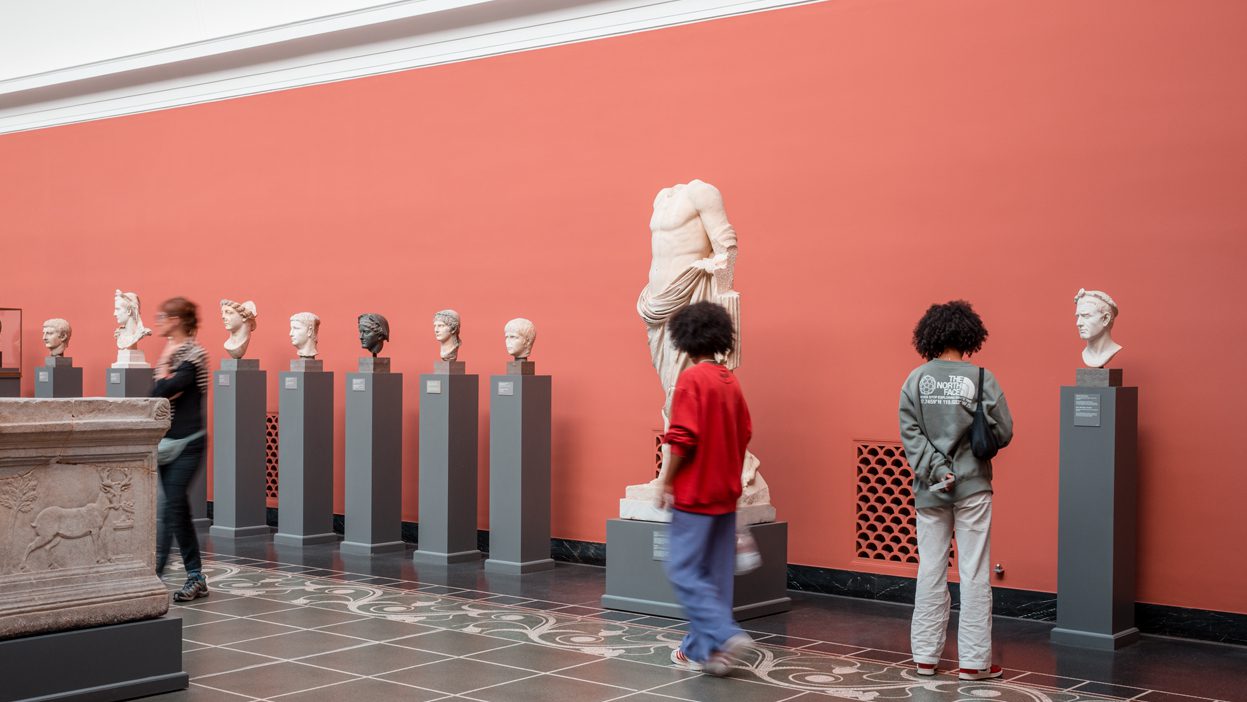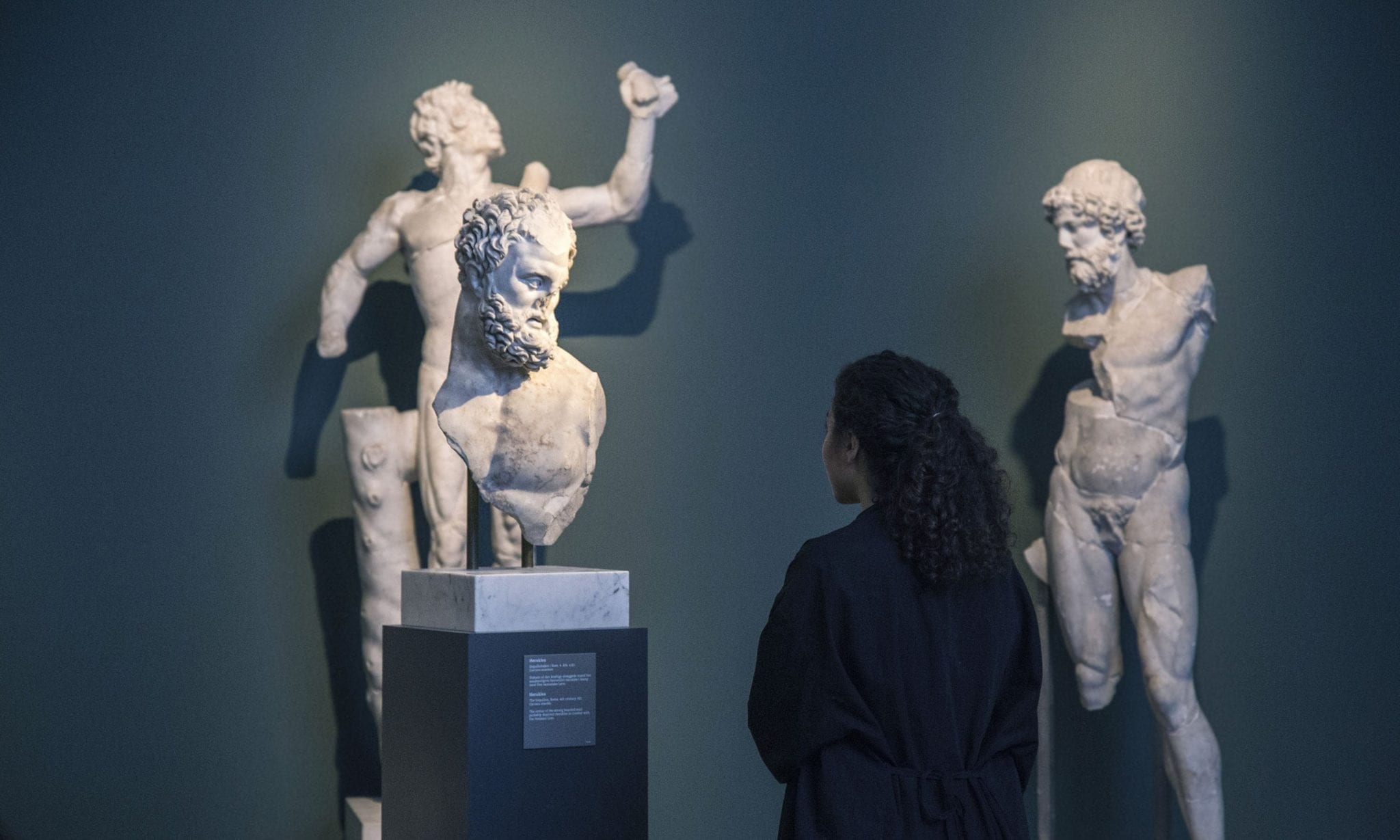In the world of the Ancient Greeks and Romans sculpture was one of the most important means of expression and communication. Every single statue, head and relief was produced with an eye to its specific purpose and message. In most cases the sculpture was set up in the public space, e.g. the city’s market place, burial ground, theatre and sanctuary. The multiple meanings and functions of sculpture in Antiquity can be experienced in the fourteen rooms which house Glyptoteket’s extensive collection of ancient sculpture from the Mediterranean world – primarily from Greece and the Roman Empire. The exhibition is a journey through a crucial chapter in European cultural history. From around 600 BCE when Greek large-scale sculpture emerged, to c. 400 CE the Roman Empire. When its form of government and religion, had to make way for Christianity and the Empire of Byzantium.
With the Human Being at the Centre
Throughout the whole of the long period covered by this exhibition, the human being and the human body constituted the most important motif in the art of sculpture. This included the representation of the gods in the image of humans. The exhibition is therefore also a promenade through a millennium’s view of the human being. Also the artistic representation of human ideals, physical as well as psychological.
Rome and the Legacy of Greece
The greater part of the collection of sculpture is made up of Roman works. Many of these, more or less directly, imitate famous Greek original sculptures from the 5th and 4th centuries BCE. The Roman works are a source for the understanding of the original Greek works. Works which, in many cases are now lost, but were, accordingly, in the Roman Imperial Period, the object of such great fascination and fame that they inspired the creation of various Roman versions.
Roman sculpture is, however, more than mere illustrations of lost Greek originals. It is also an important statement of the Romans’ own spiritual and art historical background, to wit the Roman Empire, its society and religion. A number of sections of the exhibition therefore clarify some of the contexts in which Roman sculpture featured. Which famous Greek sculptors, motifs and styles were preferred by the cultivated Roman commissioners of Greek-inspired sculpture? What was originally set up in an Imperial park in Rome? On the estate of some wealthy Roman outside the city? Or on the tomb of a noble family or in a Roman sanctuary?
Greek and Roman Portraits
Greek philosophers and statesmen, poets, Roman emperors and prominent citizens of Rome populate the rooms of Glyptoteket’s collection of Antiquities. It contains more than 400 portraits from the Ancient Greek and Roman world. The collection of – especially Roman – portraits is internationally renowned for its scope and for the high quality of the works themselves. The collection of Roman Imperial portraits reflects an ambition of Carl Jacobsen, founder of the museum, to acquire at least one portrait of every Roman emperor. In Glyptoteket today, one can stand face to face with a unique and almost complete series of Imperial portraits. Among them Augustus (27 BCE – 14 CE), the first emperor of Rome, who created the Roman Empire. And the infamous Caligula (37-48 CE) of whom Glyptoteket possesses a rare, fine portrait. Other important historical figures are to be found in Glyptoteket’s portrait collection. One of whom is Pompey the Great (106-48 BCE), military commander and Julius Caesar’s inveterate political opponent. He can be seen at Glytptoteket in the form of one of the best Roman portraits to be found anywhere.
Calendar
See the exciting activities and events, the Glyptotek has to offer. Please note, the events in Danish will not be presented here. Go to the Danish version of the homepage to see all events.
Café
Enjoy a delicious lunch at Picnic overlooking the Glyptotek's beautiful Winter Garden.
After Nature
Experience a new reading of the Glyptotek’s paintings by the Danish writer Josefine Klougart






